How to grow a good tomato crop

Tomato is one of the most popular vegetables. Already in the spring, gardeners begin active preparations for the dacha season. Almost every gardener can notice red, ripe tomatoes in the garden beds. But in order to achieve a rich harvest, you should know the technology and features of cultivation.
Content:
Preparation of tomato seeds and methods of their germination
To grow healthy and strong seedlings, you need to plant the seeds correctly. Some gardeners use already proven varieties, others are looking for new large-fruited. You can buy a good variety of seeds in a specialized store.
They should not be pre-soaked before planting. Usually, before sale, seeds are treated with pesticides and other active substances. Therefore, soaking washes away the chemicals and after sowing the seeds will become susceptible to pests.
If the seeds are collected from your garden and purchased in a store and are not treated with anything, then this should be done before sowing.
Seeds should be prepared in advance, starting at the end of January. To begin with, they are heated for 5 days at a temperature not exceeding 25 degrees. It is important to avoid overheating and drying out the seeds.
Homemade seeds should be soaked in a saline solution (add 3-4 g of salt per 100 ml of water). Then leave for a couple of minutes and then drain the solution. The seeds must be washed with clean water. The next stage is seed disinfection.Soak the seeds in a weak solution of potassium permanganate for about 20 minutes. This procedure will save seedlings from many diseases.
The next stage involves the process of seed germination. To do this, wrap the seeds in a cloth, moisten them in water, put them in a plastic bag and leave them in a warm place for a while. After a few days, if the sprouted roots are noticeable, you can sow.
There is another way to germinate tomato seeds. They are soaked in water, the temperature should not exceed 30-40 degrees. Next, wrap it in a damp cloth and cover it with a centimeter layer of cotton wool.
Leave in this state for a week at a warm temperature. Using this method of germination, it is necessary to regularly sprinkle the cotton wool with water.
To speed up the process of seed germination, some gardeners pre-soak aloe or Kalanchoe in juice for an hour. Seeds begin to be sown as early as March. Pots, boxes, jars, tin cans, glasses, etc. can be used as containers. Seeds are sown in rows at a distance of 3-5 cm from each other and a depth of 1 cm.
After completing the sowing process, leave the container with the seeds in the room on the windowsill and cover with film. As soon as the seeds have sprouted, the container must be moved to another location, the temperature reduced to 12 degrees and provided with good lighting.
Features of planting seedlings in the ground

Tomatoes are light-loving, drought-resistant plants. They prefer loamy and sandy soils. For seedlings, the ground should be free of weeds, pests and bacteria. Tomatoes do not get along with potatoes, so it is not recommended to grow them next to each other, or on soil where potatoes used to be.
The soil for planting seedlings is prepared in early autumn.The mixture should consist of horse manure and turf soil in a ratio of 2:1. Then sand, 0.5 liters of ash and 0.5 cups of superphosphate are added to this mass in a bucket of water.
Typically, seedlings are planted in greenhouses or small film shelters. Early varieties of tomatoes are planted in May and only in greenhouses, mid-late varieties from late May to early June.
Of particular importance is not only the correct preparation of not only seedlings, but also the beds. The holes are dug to a depth of 25-30 cm. Add 2 liters of water to the hole, then fertilizer and mix. After the water is absorbed, plant the seedlings.
Planting is best done in cloudy or humid weather. In hot weather, the best time to plant seedlings is morning or evening.
Care instructions
Proper care of vegetable crops will allow you to reap a rich harvest. The most important conditions for a good harvest are watering and fertilizing the plant.
It is important to prevent the soil from drying out, which can lead to cracking of the vegetable. Excess moisture delays fruit ripening.
It is necessary to water tomatoes at the root. It is advisable to use warm water. Avoid getting water on the leaves, stems and fruits. This can cause the development of late blight.
It is recommended to water no more than 2 times a week. To keep the fruits sweet, use a solution of potassium permanganate once a week. The second important point to consider is stepchildren. Remove unnecessary shoots should be done if they reach 2-3 cm. The pinching procedure is carried out using scissors.
If you leave a small stump after cutting off the shoots, this will slow down the development of the new shoot.
Yellowed lower leaves, as well as shoots, should be removed.During the flowering period, the vegetable crop must be sprayed with a solution of copper sulfate or boric acid.
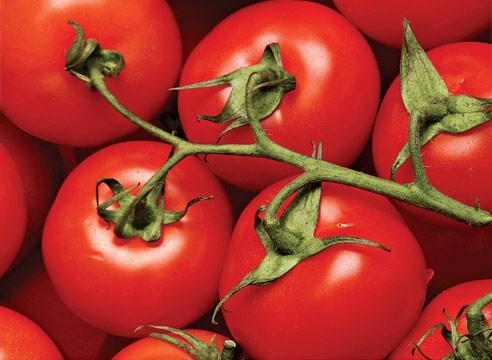
Like any vegetables, tomatoes also need feeding. It should be remembered that it is necessary to fertilize tomatoes before the ovary forms. It is best to use ash along with organic fertilizers. Sprinkle ash under the tomato bushes at the rate of 3 tablespoons per square meter.
Usually alternate abundant watering and fertilizing. You can use a mineral mixture as a top dressing. Pour ash into a two-liter jar and pour 4-5 liters of boiling water. After the ash has cooled, add 10 g of boric acid in powder form and a bottle of iodine.
Add another 5 liters of cooled boiled water to the container and mix everything well. Leave the resulting mineral mixture for 24 hours. In addition to the mineral solution, you can use a yeast mixture.
In a three-liter jar, dilute live yeast in warm boiled water. Add half a glass of sugar to the jar and leave to ferment. The mixture must be shaken periodically. Pour a glass of yeast mixture into a 10-liter bucket. One bush requires a liter of fertilizer mixture.
A new gardener should regularly inspect and check his tomatoes for any pests or signs of disease. To get rid of woodlice and slugs, lettuce leaves are scattered around the bushes.
If the tomatoes are tall, they need to be tied to supports. This should be done when the seedlings take root. In open ground, support should be made when the first leaves appear on the seedlings. The depth of the support should be about 40 cm, the distance from the stem to the peg about 10 cm.
Garter medium-sized varieties can be attached to a wire stretched on a trellis.
You should not forget to hill the tomatoes. It is advisable to perform hilling at least three times during the season.
Tomato roots grow in periods, so hilling should be carried out during the period of root growth. The main sign of root growth is the appearance of bulges at the base of the ground.
A change in shade at the tomato stem is also a sign of growth of the root system. Proper hilling involves sprinkling with moist, but not dry, soil. Thus, the root system will be powerful and branched.
Even a novice gardener can grow a high yield of tomatoes. If you adhere to the correct growing technology, you can get the first red fruits at the end of June.
Caring for tomatoes on video:
Interesting information about the vegetable garden




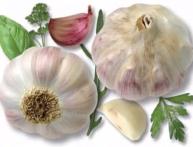
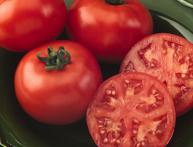

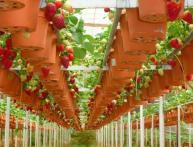

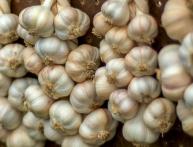
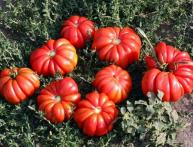
Comments
In advance - after February 14, I plant tomato seeds in cups - I make seedlings. In the spring I move small bushes into the yard - into the air and sun. After planting in the soil, I water it often, but make sure not to overwater it. The harvest is pleasing every year.